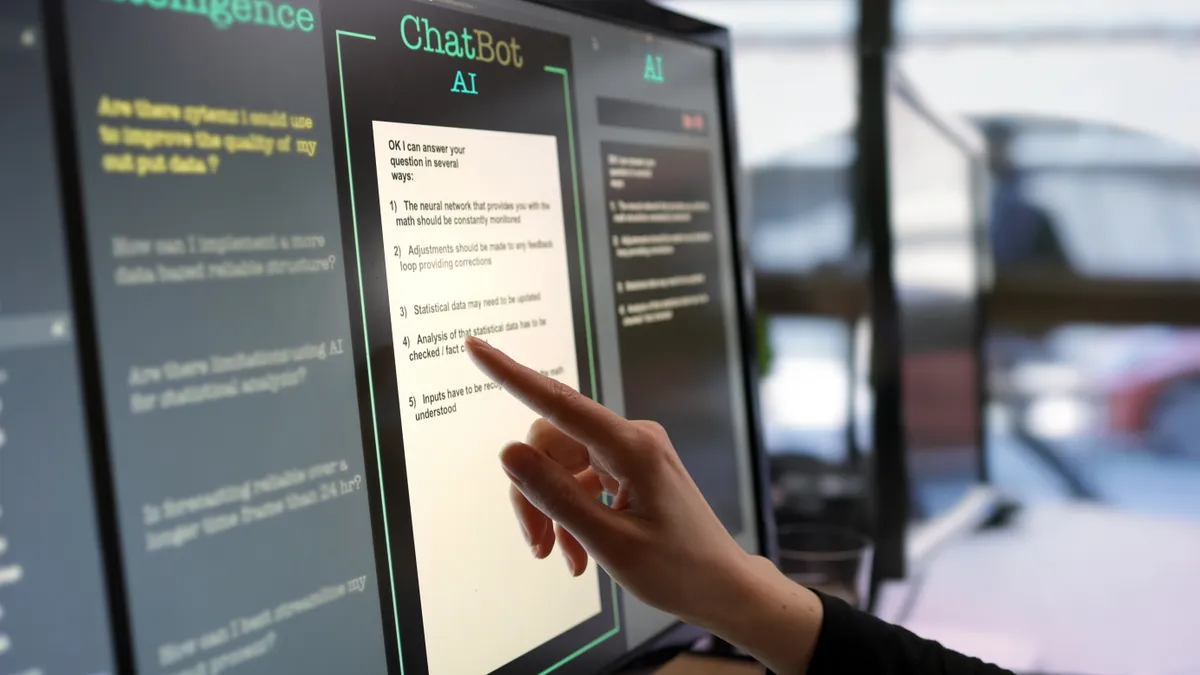U.S. 8th graders can use computers to gather basic information and make simple edits. They also have some awareness of security risks in the digital world. But they’re less likely to understand the purpose of sponsored content on a website, use generic mapping software or know how to control color and text when creating a presentation.
Those are among the 2018 results of the International Computer and Information Literacy Study released Tuesday by the International Association for the Evaluation of Educational Achievement, which also conducts other large-scale international studies.
Across the 12 education systems participating in the study, the average score on the computer and information literacy portion of the test was 496 on a scale from 100 to 700. A quarter of all students scored at the lowest level, and 18% scored below the lowest level. U.S. students scored 519 — below Denmark, the Republic of Korea and Finland, but ahead of several other countries, including Germany, France and Chile.
Still, the results, officials said, suggest students don’t “develop sophisticated digital skills” just because they grow up as digital natives.
“Confidence, and crucially, competence, in the use of digital devices is of vital importance globally,” Dirk Hastedt, IEA executive director, said in a statement. “It is essential that young people are taught these skills at schools, and that their teachers are well supported in delivering this bedrock of modern education.”
The findings confirm other recent studies in the U.S. showing students can be easily misled by digital media messages.
The U.S. actually didn’t meet the IEA’s strict sampling requirements of having at least 75% of students in each school completing the assessment. That means the organization can’t confirm the results are truly representative of the entire U.S.
But Julian Fraillon, the ICILS study’s director, noted participation rates in the U.S. were still high — 70% for students and 65% for teachers answering questions about topics such as their own confidence in teaching these skills and how the technologies are used in the curriculum.
“The data are valid,” Fraillon said. “They are absolutely true reflections of participation, representative of high proportions of students and teachers in the U.S.”
Socioeconomic, gender divides
On tasks measuring students’ computational thinking, U.S. students earned a mid-range average score of 498 on the scale, meaning they “demonstrate understanding of how computation can be used to solve real-world problems.” But they are less skilled at creating algorithms or debugging them when problems arise.
For this part of the assessment, students were given tasks such as dragging and dropping code to control a drone used in farming. Another problem asked them to apply a set of conditions for a crash simulator, such as setting breaking distance for a bus so it wouldn’t run into a pile of rocks.
The results for both areas of the assessment, the study authors say, point to a digital divide between students from lower and higher socioeconomic backgrounds. Across all countries, students whose parents had lower educational levels, worked lower-skilled jobs and had fewer books in the home scored lower on both areas of the assessment.
But there is also a divide, the authors say, extending “beyond access to technology to include how technology is used in schools and how students are empowered through technology to participate in their digital world.” Seventy percent of students across countries attended schools where digital resources connected to textbooks was available, but 32% of teachers reported using such content.
Gender differences were apparent for both computer and information literacy and for computational thinking, but they varied. In the computer and information literacy section, females outscored males on average and in most of the countries. But in computational thinking, males consistently scored higher than females.
The authors of the study note the findings are consistent with evidence females are better at using digital technology for locating information and creating pieces that communicate information to others. Males, on the other hand, are more likely to tackle specific tasks, such as changing computer settings or creating a program.
“These findings provide a challenge to curricular and educational policy,” they write, adding the results raise “questions about how these gender differences in attitudes and achievement may be addressed.”
The results also have implications for school and district leaders. Teachers surveyed were more likely to use ed tech if they had technical support, time to plan lessons and opportunities to develop their own expertise with the tools.
The next round of testing will occur in 2023, with the assessment tasks further expanded to reflect new applications.





















